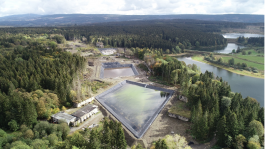
02/02/2021 Photo: Halali Verwaltungs GmbH
The site Werk Tanne, is a former explosives factory where explosives (mainly TNT) were produced during the Second World War. The site is extensively contaminated with explosive-type compounds. Due to the diffuse distribution in the soil, large-scale decontamination is not possible, so that remediation is now being carried out by means of collection and treatment of contaminated leachate (as main contamination source), using a constructed wetland system (Fig. 1).

Figure 1. Retention basin (bottom), Constructed Wetland (center), (Photo: Halali Verwaltungs GmbH)
The system consists of a rainwater retention basin (15,000 m³), a reaction basin with iron gravel (36 m³) with molasses dosage, the constructed wetland (3,630 m²), a sedimentation basin (229 m²) and a clean water cascade in the outflow, which was put into trial operation at the end of 2020. The polluted leachate is collected and added into the rainwater retention basin with a volume of 15,000 m³ (Fig. 2).
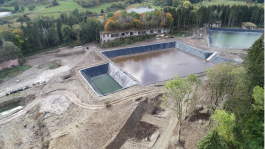
Figure 2. Retention basin (right), CW (center), sedimentation basin (left), (Photo: Halali Verwaltungs GmbH)
Here, during the retention time of several days, a degradation of about half of the pollutant concentration takes place through photolysis. The water is then passed through a reaction basin filled with an iron-gravel backdrop to which molasses is added in proportion to the flow rate. Reducing conditions are created and the water is enriched with iron. The following CW is a foil-sealed basin of 3,630 m², filled with an 80 cm thick gravel bed and planted with 28,000 rhizomes of Common reed (Phragmites australis) (Fig. 3).
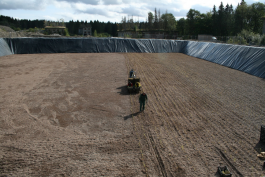
Figure 3. Planting the gravel bed (Photo: Halali Verwaltungs GmbH)
The inflow is distributed over the entire width of the basin (Fig. 4). In the root zone of the plants, microbial and chemically degradation of pollutants takes place. Some degradation products are bound to minerals and humic substances (irreversible complex formation), while others are completely mineralized. The calculated retention time is 2.3 days. Iron is separated from the treated water in a downstream sedimentation basin before it is discharged into the middle pond ("Mittlerer Pfauenteich") via a clean water cascade consisting of 27 concrete basins with exchange walls. The degradation through the entire treatment plant is estimated to be approximately 98%.
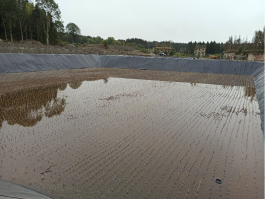
Figure 4. Completed wetland (Photo: Halali Verwaltungs GmbH)
The plant was put into trial operation at the end of 2020. It is expected that the construction of a second, identical plant in 2023 will double the current purification capacity of 18 m³/h. The water flow is driven by gravity exclusively, only molasses is added by means of a pump, so that the operating costs are relatively low.
Visit the CWetlands platform for more information: https://data.cwetlandsdata.com/cwetlands/overview/45/
Location: Werk Tanne
City: Clausthal-Zellerfeld
State: Lower Saxony
Country: Germany
Project Size: 68.7 ha (sub-catchment area of the river Innerste)
Wetland Type (System/Cells):
Subsurface horizontal flow; Upstream retention basin and reaction basin with iron gravel and molasses dosage
Company/Organization: Halali Verwaltungs GmbH, Landkreis Goslar
Partners


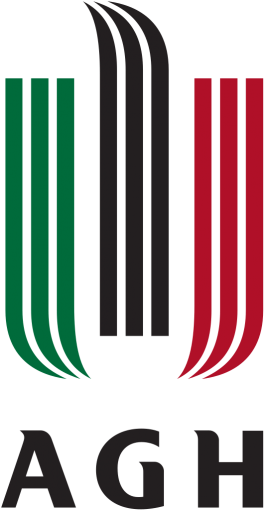


Partners






Duration of the project:
July 1st 2020 - June 30th 2023